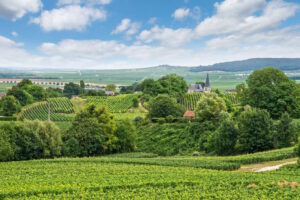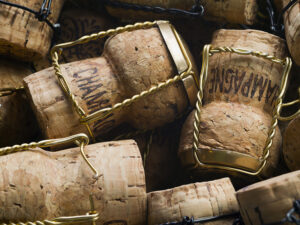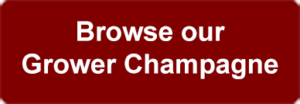Following on from the explanation of the various classifications of producer of Champagne (‘Champagne – NM, ND, CM, RC, MA, or RM – what and why?‘), this is how the pieces fit together in terms of their place in the market.

The Grandes Marques (Big Brands) – (NM and ND)
If total Champagne production is around 300-320 million bottles, Moët & Chandon alone, at 30m bottles, is pushing 10% of all Champagne sold (and more than total UK Champagne imports). Moët’s prestige cuvée, Dom Pérignon, estimated at around 5m bottles, is an important force in the overall market, especially in value. Even Krug is estimated at between 425k and 500k bottles per annum. When you add 15-20m bottles per annum for Veuve Clicquot, and a few million for Mercier, Ruinart and Janisson, you get to a figure of somewhere around 65-70 million bottles for the LVMH group. The numbers of bottles are best guesses and may well be out of date, but the combined group turned over nearly €2.05 billion in figures reported in 2022.
LVMH’s share in the US (the largest export market) is estimated to be between 45 and 50%. According to the CIVC there are 370 ‘houses’ which are responsible for 78% of turnover and 90% of all exports by value.
Other large players struggle to compete with LVMH; the Laurent Perrier group, which includes de Castellane, Salon and Delamotte, turned over €305m, The Vranken-Pommery group, including Heidsieck Monopole, Charles Lafitte and Bissinger came in at €271.5m. Lanson BCC, which takes in Lanson, Burtin, Besserat de Bellefon, Boizel, Chanoine Frères, Philipponnat, De Venoge and Alexandre Bonnet were behind them at €255.4m. Next come the combined forces of G.H. Mumm and Perrier-Jouet (the Champagne arm of the Pernod-Ricard group) at €217.4m, followed by Louis Roederer (which includes Deutz) at €166.8m. Taittinger (with Irroy) is at €155.9m, Piper-Heidsieck and Charles Heidsieck at €141.2m, Bollinger with Ayala at a shade over €100m, Billecart-Salmon, on €80.6m is just ahead of the Thiénot group, which includes, Canard-Duchêne, Joseph Perrier and Marie Stuart at €73.9m. After that come Martel (with Charles de Cazanove), Nicolas Gueusquin with Collery (no, me neither), and then, at €49.2M, our friends at Pol Roger.*
The Co-ops (CM and RC)
The cooperative movement has been a force to be reckoned with in French agriculture and viticulture since the middle of the nineteenth century, and Champagne was no exception. In 1851, a group of grape growers in the village of Pierry (a village just to the south of Épernay) formed the first cooperative called La Société Vinicole de Pierry, which was designed to help them produce and market their Champagne more effectively. Nowadays there are 130 cooperatives, and the largest, the Centre Vinicole – Champagne Nicolas Feuillatte (CN-CNF), has around 5000 members and sells 13 million bottles a year. Castelnau, at 3.5m bottles, and Devaux, in the Aube department to the south at 4m are two of the other bigger cooperatives with their own brands and marketing, but some of the others, which are just as big as these, sell mostly as unfermented must or vins clairs to other brands.

The BOB market (MA)
It is estimated that MAs account for approximately 8% of all Champagne, or around 9% in value. Most of these, even if labelled for grand retailers or restaurants, will be good house Champagne level at best, so not likely for be better than a good representation of what you might expect from a bottle of Champagne, and unlikely to have any very distinct character. The suppliers are the NMs or CMs above.
‘Grower Champagne’
What is the growers’ place in all this? The 16,200 of them own 90% of the vineyard, yet their share of the market is tiny (estimated at 4% by value), largely because nearly all only grow grapes to sell to one of the houses or to a cooperative. The few that make their own Champagne from beginning to end have little power in the market and little cash for marketing, so they need to compete on price, which is tough because of the brands’ and co-ops’ economies of scale, or on quality, which is that much harder to achieve because they do not have the breadth of blending opportunities available to the big houses. Many will still sell the majority of their grapes but will keep back some to make their own Champagne. For some this is mere ‘bricolage‘, for others, they have seen what can be achieved by the leading figures like Anselme Selosse and Francis Egly, and they are inspired.
*These turnover figures are those declared to the CIVC in 2022, so are assumed to be for Champagne sales alone in the case of groups that own other assets.
